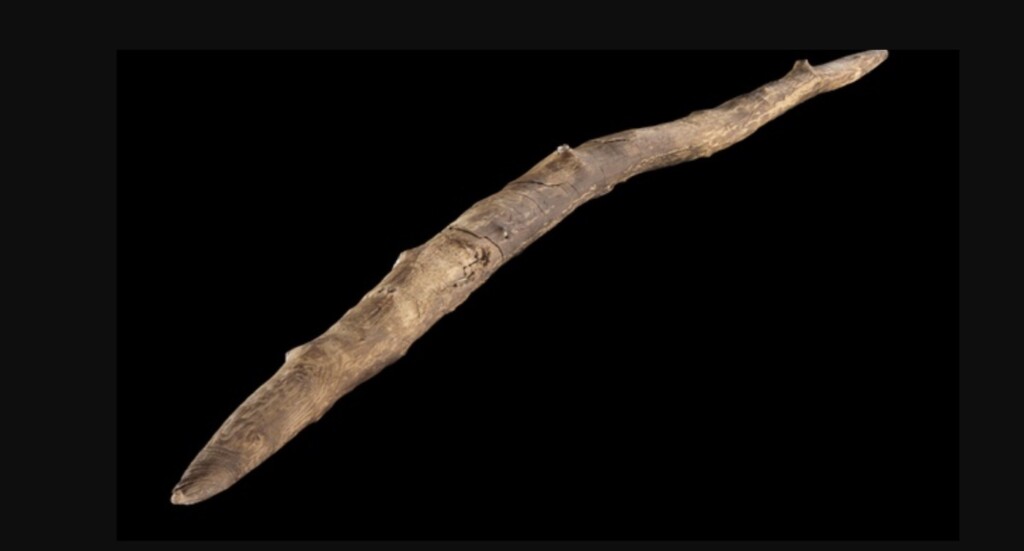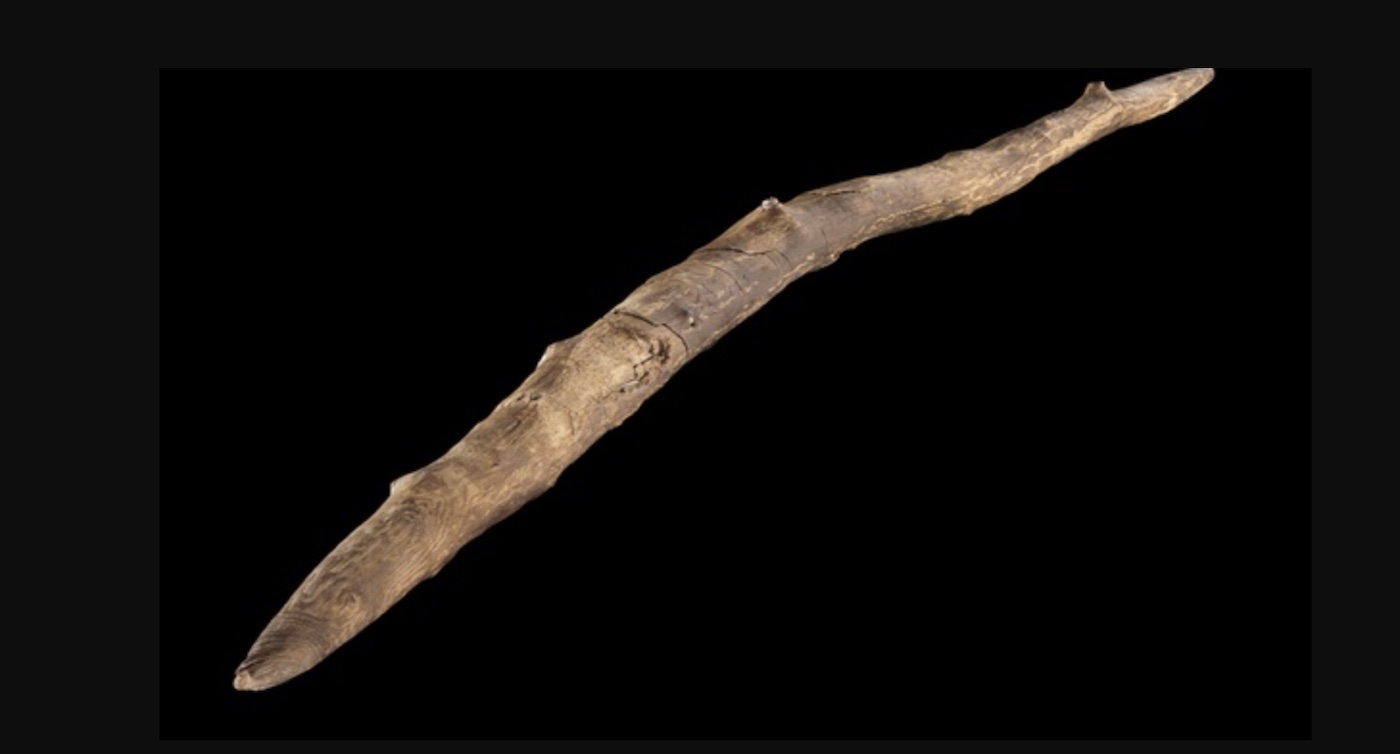
In the hands of a capable Ice Age hunter, this simple stick could be used to nail small mammals, or even assist in taking deer and horses.
It is supposed that the four-foot-long projectile could be hurled at beasts grazing up to 30 meters away, and with a point at either end, was twice as likely to do damage as a single-pointed dart.
It was dug up at the Schoeningen Palaeolithic site complex in Lower Saxony, a coal-mining area that has yielded a number of archaeological discoveries since the 1990s. Produced by early humans known as the ‘Heidelberg People,’ the skillful woodwork techniques show how they may have been more sophisticated and intelligent than previously thought.
“Our detailed analysis of the double-pointed stick leaves no doubt this was a well-planned, expertly manufactured, and finely finished tool,” said Dr. Annemieke Milks of Reading University, lead author of the paper published on the tool.
The Heidelberg People were the first recorded proper hominids to build homes and hunt big game, but they became extinct before the end of the last Ice Age. This stick was found amid a number of similar wooden tools found by a lakeside where it is believed they had a permanent encampment.
Throwing sticks have been recorded in dozens of ancient cultures, perhaps the most famous of which being the boomerang of the Australian Aborigines. They’re a rudimentary rung of the evolutionary ladder that took humans to the modern archery setup of carbon fiber, laser pointers, and razer-bladed mechanical broadhead tips, but could nevertheless be absolutely lethal if aimed properly.
OTHER NEWS LIKE THIS: Remains of Prehistoric BBQ Suggests Dinner was Served 780,000 Years Ago–600,000 Years Earlier than we Thought
“The hominins selected a spruce branch which they then debarked and shaped into an aerodynamic and ergonomic tool. They likely seasoned the wood to avoid cracking and warping. After a long period of use, it was probably lost during hunting,” wrote Dr. Milks.
An interesting, if less-likely scenario for this throwing stick is that it was a child’s toy—meant to fit their hands and allow them to gain experience with a larger, similar weapon they would eventually grow up to use. Other researchers have shown this to be common practice among early hominids.
MORE PREHISTORIC FINDS: Prehistoric ‘Axe Factory’ Found in Britain Triggers Search for More Artifacts
“The Schoeningen hominins thus had the capacity for remarkable planning depth, knowledge of raw materials, and considerable woodworking skill, resulting in an expertly designed tool,” Dr. Milks commented.
“The double-pointed sticks were potentially used to assist the hunting of larger prey but may have also been used for hunting birds and small mammals.”
Researchers can only guess how exactly the stick may have been used. Some hunter-gatherers alive today rely on wearing down their prey over long-distance chases. In such circumstances, a volley of these double-pointed sticks hurled at a target in the hope of a light wound could have made all the difference over the miles of the successive chase.
SHARE This Prehistoric Hunting Strategy With Your Friends…




















